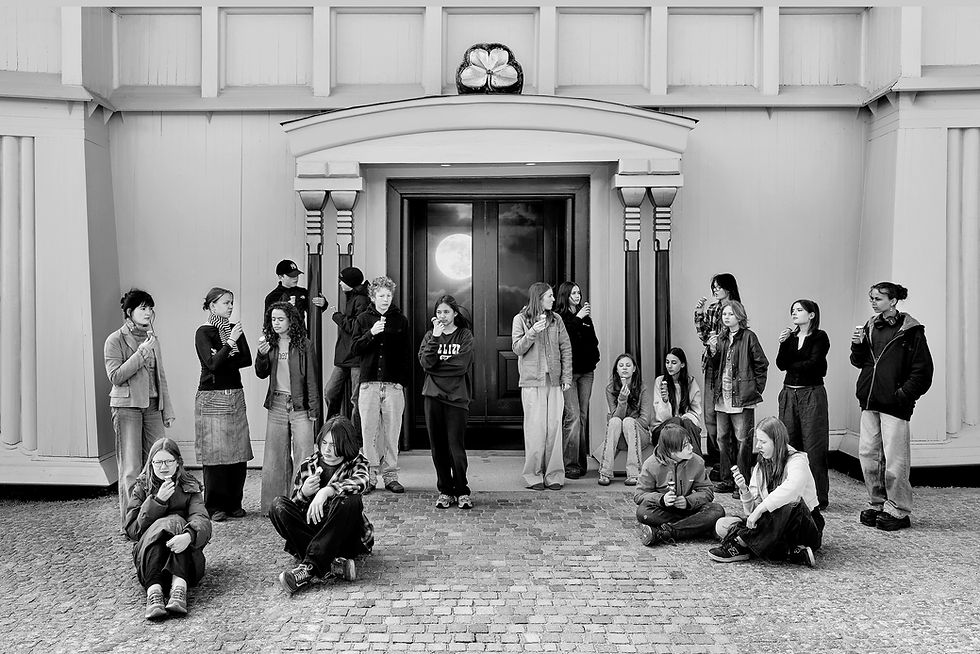Truth Beneath a Confession
- Sep 20, 2020
- 4 min read

Study for Truth Beneath a Confession by Mark Justiniani, 7 May 2018.
Truth Beneath a Confession wishes to untangle and raise questions surrounding the inherent need of individuals for confession in contemporary society. The idea is inspired by Alain de Botton’s ‘The Confessions Game,’ a board game composed of 100 cards calling one to truthfully answer in the presence of friends and/or strangers, intimate yet universal questions about one’s family, relationship, money, career and sex. This immersive installation is proposed as a sanctuary for revelations where the artist and the artwork take the lead as the listening confessors and the role of facilitator (or the layman priest), while the audience acts as the confessors voluntarily surfacing hidden truths about oneself through this encounter. Like De Botton’s game, the work presents an inquiry and face to face confrontation into the daily complexities of individual psychology, emotions, thoughts and well-kept secrets. Akin to the Catholic confessional setting, the confessor is given the personal choice of what to reveal and perhaps what is necessary for the individual to unburden oneself. Here lies the test of the confessor’s decision of taking the alternative route of a mitigated public and artistic exercise in place of the sacristy’s privacy.
The act of confession in the Filipino culture is engraved at the core of many of its people largely through Catholicism. The belief in salvation, forgiveness, spiritual cleansing, freedom from sin or release from guilt, accounts for the weight confession holds in one’s mind. Yet interestingly, the Filipino word for confession, kumpisal is a mere loan from the Spanish confesar, which pertains to admission, acknowledgement of a wrongdoing. Truth Beneath A Confession leans closer to the word ‘tapat’, which attributes to being truthful, faithful, honest, or in a different context, alluding to something that’s fixed, across, opposite or in parallel. And even as one reverses the letters of ‘tapat,’ (truth), it still reads as ‘tapat,’ as if confirming that the truth will always remain as such.
For the Philippine Pavilion at the 58th Venice Biennale in 2019, the curator invites Filipino artist, Mark Justiniani to create an environment transforming the Arsenale space into a continuous yet suspended encounter about revelations and confessions. Combining the artist’s use of ‘magic realism’ and employment of Palindromes, Truth Beneath a Confession, will see the power of play between reality and illusion. Layers of mirrors, concrete façade & surfaces, collection of objects such as personal letters, diaries, photographs, or digital artifice (i.e. facebook accounts, text messages) will occupy the environment of the confessional.
Justiniani’s new work will borrow certain elements from a church-like setting. This would try to capture the route to the temple of salvation (from outside to inside), and the passage way towards the confessional. It establishes a casual walk at the beach that eventually reveals a steep curve to the deep end of the ocean. The artist creates a narrow yet shallow walkway that gives the illusion that slowly goes deeper and deeper as one gets close to the confessional. The closer one moves towards the confessional, it slowly gives one the feeling of discomfort as if when one trips or moves beyond the prescribed artist zone, he/she could potentially fall off a cliff, drown in the water or worse be engulfed in quicksand. Clues about previous adventurers are evident and spread across the path. Their letters of confession are suspended in time and visible to the onlookers.
Upon reaching the confessional, the confessor is invited to disclose a truthful confession by way of writing and/or depositing an object of personal value linked to the revelation on the infinity capsule, and move on. The act of public confession, an invitation for the audience to divulge what’s private, presents the exercise of unravelling the boldness that comes from the shift of the intimate one on one disclosure towards a public confession – as if seeking refuge or comfort in the presence/acknowledgment of others.

Study for the interior of Truth Beneath a Confession by Mark Justiniani, May 2018.
The installation likewise lends itself to the ‘performance of truth’ leaving the responsibility to the audience to take a plunge into the depths of infinity. The confessors are encouraged to leave and declutter their minds and souls by giving the most honest confession as if it’s the only way to win and release the many imagined truths/realities in their heads. In the process of accumulating public confessions, the work takes on the position of authority, role psycho-therapist and/or the representation of a priest symbolically concluding the absolution rites. The encounter will revisit the tension that exists between the truths behind the revelations and need of the confessors to articulate them.
As the visitors partake in the act of confession, they collectively and even unknowingly take the step towards their individual absolution. In Filipino this word translates to ‘pagpapawalang-sala’ (removal of sin). If one simply takes the word ‘sala’, which means wrong or wrongdoing, by reversing the letters, it would read as ‘alas.’ This word now changes the meaning, which in English is ‘ace’ (ace of cards), with the context thereby having the upper hand. It’s as if the reversal of the letters has become synonymous to the reversal of one’s fortune through the rites of absolution. Alas, as the choice between the entrance and exit manifests in the space within the Truth Beneath a Confession.
Truth Beneath a Confession was a proposal co-developed by Vanini Belarmino and Mark Justiniani for the Philippine Pavilion for the 58th Venice Biennale. It placed second in the jury selection.




Comments